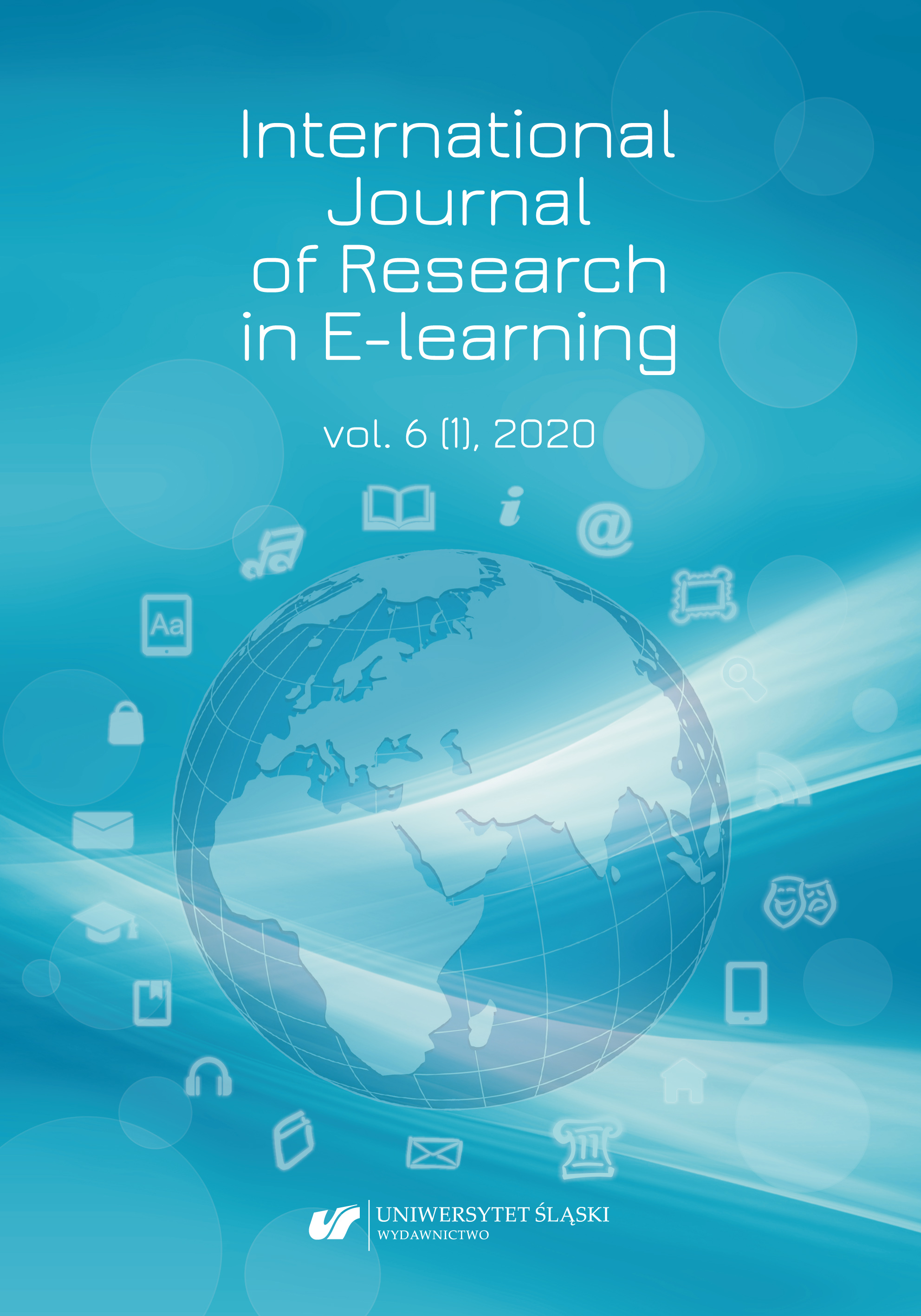Awidi, T. I., & Paynter, M. (2019). The impact of a flipped classroom approach on student learning experience. Computers and Education, 128, 269–283. doi.org/10.1016/j.compedu.2018.09.013.
Google Scholar
Bergmann, J., & Sams, A. (2012). Flip your classroom: Talk to every student in every class every day. Washington, DC: International Society for Technology in Education.
Google Scholar
Blazquez, O., Masluk, B., Gascon, S., Fueyo D.R. (2019). The use of flipped classroom as an active learning approach improves academic performance in social work: A randomized trial in a university. PLOS ONE, 1–15. /doi.org/10.1371/journal.pone.0214623.
Google Scholar
Buhaichuk, K. L. (2016). Zmishane navchannya: teoretychnyj analiz ta vprovadzhennya v osvitnij proces vyshhyx navchalnyx zakladiv. [Blending learning: theoretical analysis and strategy of implementation in educational process of higher educational institutions]. Information technology and learning tools, 54 (4), 1–18. (In Ukrainian).
Google Scholar
Buhaichuk, K. L. (2016) Proceedings from the International Conference Psyxologichni ta pedagogichni problemy profesijnogo ta patriotychnogo vyxovannya v systemi ministerstva vnutrishnyx sprav Ukrayiny [Psychological and pedagogical problems of professional and patriotic staff education in the system of the Ukraine Internal Affairs Ministry]. Kharkiv: Kharkiv National University of Internal Affairs. (In Ukrainian).
Google Scholar
Didukh, L. I. (2015). Vykorystannya perevernutogo navchannya u VNZ [Using of the flipped learning in the higher school institutions]. Modern information technologies and innovative methods of training in the specialists’ preparation: methodology, theory, experience, problems, 41, 292–295. (In Ukrainian).
Google Scholar
Kademiia, M. Yu. (2016). Vykorystannya zmishanoyi texnologiyi navchannya u dystancijnij osviti [Using of the blended learning education technology in distance education]. Modern information technologies and innovative methods of training in the specialists’ preparation: methodology, theory, experience, problems, 44, 330–333. (In Ukrainian).
Google Scholar
Karagol, I. & Esen, E. (2019). The effect of flipped learning approach on academic achievement: a meta-analysis study. Hacettepe University Journal of Education, 34(3), 708–272. doi: 10.16986/HUJE.2018046755.
Google Scholar
Korotun, О. V. (2016). Metodologichni zasady zmishanogo navchannya v umovax vyshhoyi osvity [Methodological bases of blended learning it the higher education]. Information technologies in education, 3(28), 117–129. (In Ukrainian).
Google Scholar
Koziar, М. М., & Kademiia, М. Yu. (2015). Innovacijni texnologiyi pidgotovky faxivciv u vysjyx navchalnyx zakladax [Innovation technologies of specialists teaching in higher educational institutions]. Collection of scientific works of National Pedagogical Dragomanov University, 16, 92–96. (In Ukrainian).
Google Scholar
Koshechko, N. (2015). Innovacijni osvitni texnologiyi navchannya ta vykladannya u vyshhij shkoli [Innovation educational technology of teaching and learning in a higher school]. Bulletin of Taras Shevchenko National University of Kyiv, 1(1), 35‒38. (In Ukrainian).
Google Scholar
Markova, N., & Shmatok, A. (2018). Perevernute navchannya, yak odyn iz metodiv pokrashhennya vyvchennya inozemnoyi movy v suchasnomu ekonomichnomu VNZ [Flipped learning as one of the methods of foreign language learning improvement in the modern economic higher institution]. Retrieved from: http://ir.kneu.edu.ua/bitstream/2010/25132/1/ M_ 256-262.pdf (accessed 1 June 2019). (In Ukrainian).
Google Scholar
Morze, N., & Kuzminska, O. (2017). Blended learning in practice of e-learning managers training. Proceeding from the International Conference Distance learning, simulation and communication. Brno: University of Defence. ISSN 978-80-7231-415-7.
Google Scholar
Morze, N., Makhachashvili, R. & Smyrnova-Trybulska, E. (2016). The roadmap of collaboration skills from programmed teaching to e-learning. International Journal of research in e-learning, 2(1), 41–56.
Google Scholar
Popadiuk, S. S., & Skurativska, М. О. (2017). Metodologichni zasady vykorystannya osvitnoyi koncepciyi “perevernute navchannya” u vyshhij shkoli [Methodological bases of the educational concept “Flipped learning” usage at a higher school]. Collection of scientific articles of Kherson State University, LXXVI (3), 149–153. (In Ukrainian).
Google Scholar
Prykhodkina, N. О. (2015). Vykorystannya texnologiyi perevernutogo navchannya u profesijnij diyalnosti vykladachiv vyshhoyi shkoly [Using of the flipped learning technology for the teachers’ professional activity in the higher school]. Scientific bulletin of Uzhhhorod University, 30, 141–144. (In Ukrainian).
Google Scholar
Piankovska, І. V. (2016). Zastosuvannya texnologiyi perevernenogo navchannya u vykladanni dyscypliny “Leksychnyj menedzhment” [Application of the flipped learning technology in teaching of “Lexical management” discipline]. Scientific proceedings of Ostroh Academy National University, 60, 52–56. (In Ukrainian).
Google Scholar
Romanych, N. V. (2015). “Perevernute” navchannya ‒ klyuchova tendenciya osvitnix texnologij suchasnosti [“Flipped” learning as a key tendency of contemporary educational technologies]. Educational Internet-navigator, 2, 24–27. (In Ukrainian).
Google Scholar
Yalova, K., & Zavgorodnii, V. (2016). Challenges and prospects in development of e-learning system for IT students. Engineering Education and Life-Long Learning, 1(26), 25‒43.
Google Scholar
Yalova, K., & Yashyna, K. (2017). Academic massive open online courses platform functional modeling. The scientific heritage, 12, 109‒113.
Google Scholar
Yalova, K., & Zavgorodnii, V. (2016). Texnologiyi ta zasoby programnoyi realizaciyi system elektronnogo navchannya [Technologies and software of e-learning systems program implementation]. Collection of scholarly papers of Dniprodzerzhinsk State Technical University, 1(28), 149‒155. (In Ukrainian).
Google Scholar
Yevdokymova-Lysohor, L. А. (2016) Model perevernutogo klasu u procesi formuvannya kompetentnostej studentiv ekonomichnyx specialnostej [Flipped classroom model in the process of economic specialties students’ competencies forming]. Bulletin of the T.H. Shevchenko National University «Chernihiv Colehium», 141, 69–72. (In Ukrainian).
Google Scholar


 https://doi.org/10.31261/IJREL.2020.6.1.06
https://doi.org/10.31261/IJREL.2020.6.1.06
